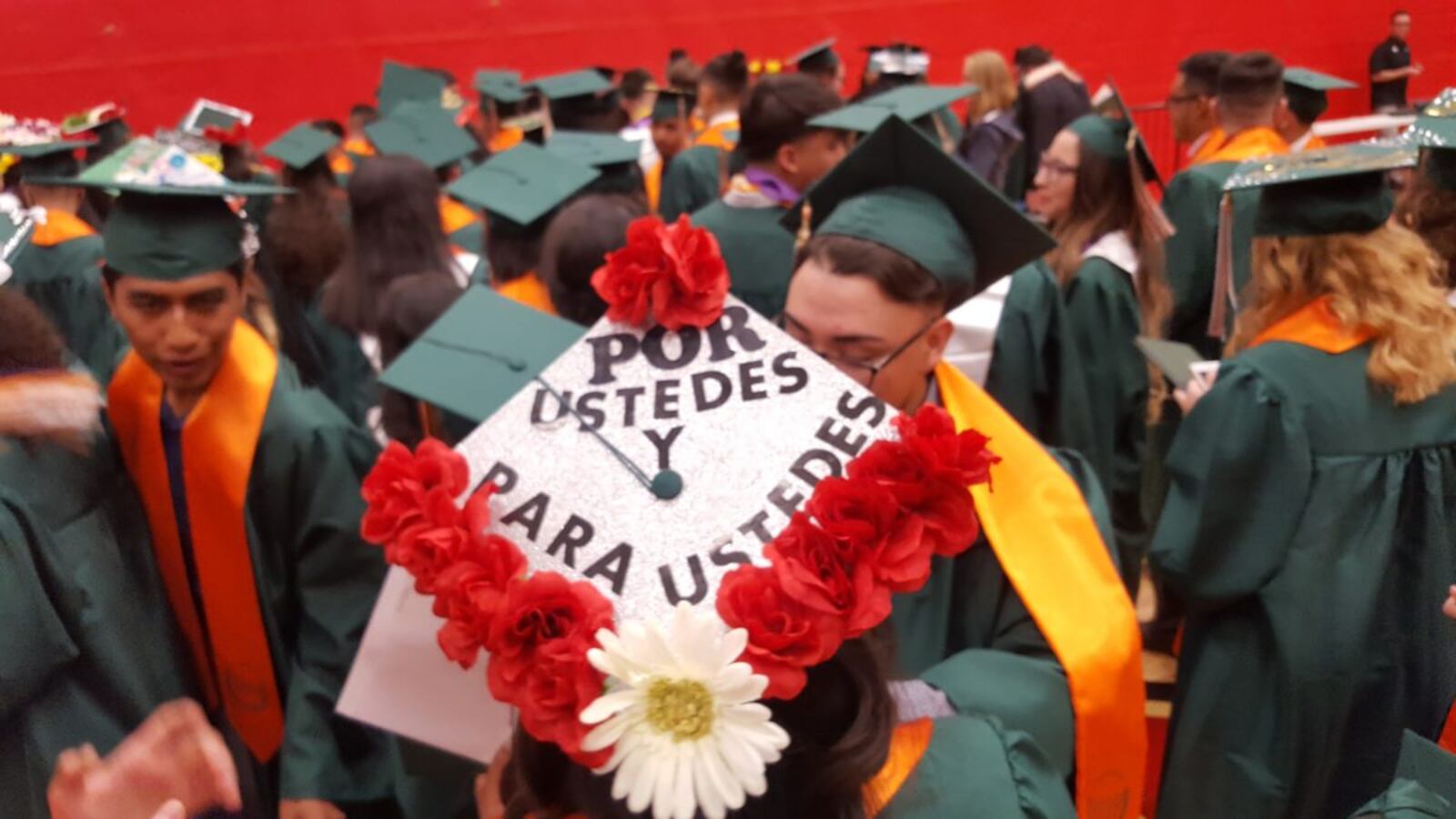Colorado graduation rates bumped up again in 2019 although districts posted more modest gains than before, and more of them saw decreases in the percent of students graduating in four years.
The Aurora school district was one of those. While the district’s large gains in recent years had helped it earn its way off the state’s watchlist for low performance, that trend stopped, according to the most recent data from 2019, released Tuesday. The class of 2019 had a graduation rate of 76.2%, slightly down from the previous class’s 76.5% rate.
The Englewood school district, which has the lowest graduation rates in the metro area, saw a significant decrease, with just 50.4% of its 2019 class graduating in four years, down from 52.5% previously.
At the same time, many schools and districts, including Aurora and Englewood, saw increases in the number of students graduating after more time — five, six or seven years. Dropout rates are also decreasing.
Andy Tucker, the state’s director of post secondary and workforce readiness, said that the goal for students is “true” post secondary and workforce readiness, and said there is no downside to students taking longer if it means that they graduate prepared.
“Some students just need a little more time,” Tucker said. “It’s really about as simple as that.”
The Denver district continues to recover from a 2017 dip in its graduation rate. Denver Public Schools had a slight increase in its graduation rate, with 70.9% of students graduating in four years.
Among metro-area districts, the Mapleton, Sheridan and 27J district in Brighton posted the largest gains in their four-year graduation rates.
Statewide, Colorado’s 81.1% graduation rate still leaves the state below the national average.
And there was less progress on closing the gap in graduation rates between students of color and their white peers. This year, the graduation rate for black students remained flat at 74.4%, while it dropped for students who identify as Asian, American Indian, and students of two or more races.
The graduation rate increased by about the same amount for Hispanic and white students — Hispanic students had a 74% graduation rate, compared to an 85.3% graduation rate for white students — meaning the gap between them remained the same.
Graduation requirements are about to change. This year’s seniors will be the last class to graduate under current requirements. This year’s juniors will be the first to graduate under new requirements that will require competency in English and math. The state approved an array of ways students can show that competency, and each district was to establish its own guidance for students using that list.
On a school-by-school level, some of the lowest-performing high schools that must face the State Board of Education soon for their low performance also posted mixed results.
Manual High School in Denver, for instance, had a significant drop in its four-year-rate. Last spring, the school graduated 62% of its senior class, down from 71.9% who graduated in four years in 2018.
But the school has a larger number of students taking extra time to graduate. Manual’s highest graduation rate is its five-year-rate of 85.7%, up from 83.1% in 2018.
Adams City High School and Aurora Central High School, two of the schools that have been on the state’s watchlist the longest, posted different results. Adams City had a 75% graduation rate, a slight uptick from last year. Aurora Central had a 69% graduation rate, which is down from last year.
Like Manual in Denver, both schools showed an increase in their five-year rates.
Look up your school and district four-year rates in our tool below:


